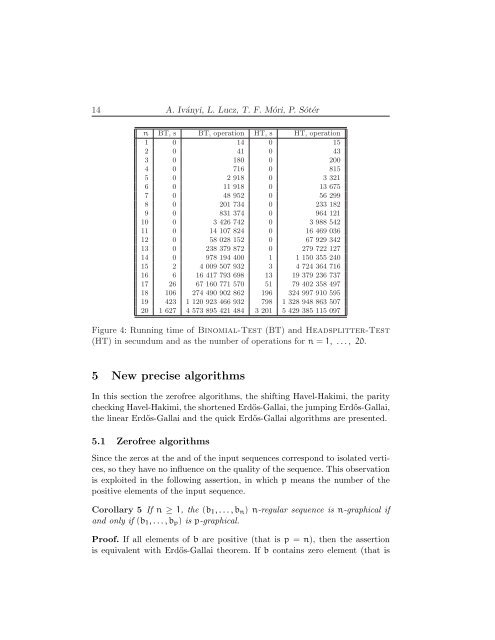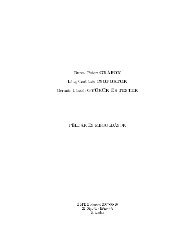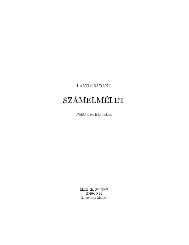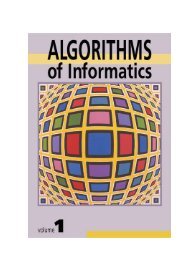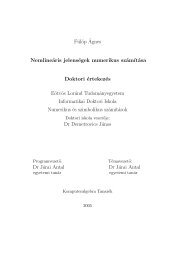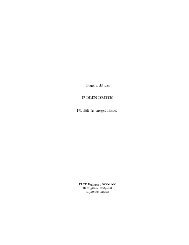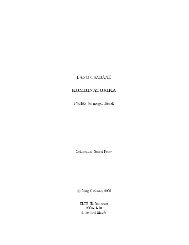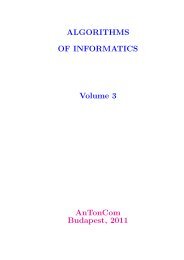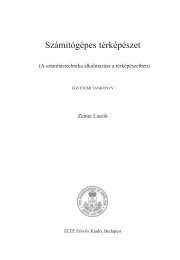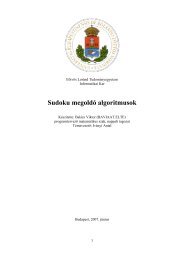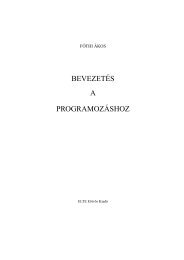On Erd˝os-Gallai and Havel-Hakimi algorithms
On Erd˝os-Gallai and Havel-Hakimi algorithms
On Erd˝os-Gallai and Havel-Hakimi algorithms
You also want an ePaper? Increase the reach of your titles
YUMPU automatically turns print PDFs into web optimized ePapers that Google loves.
14 A. Iványi, L. Lucz, T. F. Móri, P. Sótér<br />
n BT, s BT, operation HT, s HT, operation<br />
1 0 14 0 15<br />
2 0 41 0 43<br />
3 0 180 0 200<br />
4 0 716 0 815<br />
5 0 2 918 0 3 321<br />
6 0 11 918 0 13 675<br />
7 0 48 952 0 56 299<br />
8 0 201 734 0 233 182<br />
9 0 831 374 0 964 121<br />
10 0 3 426 742 0 3 988 542<br />
11 0 14 107 824 0 16 469 036<br />
12 0 58 028 152 0 67 929 342<br />
13 0 238 379 872 0 279 722 127<br />
14 0 978 194 400 1 1 150 355 240<br />
15 2 4 009 507 932 3 4 724 364 716<br />
16 6 16 417 793 698 13 19 379 236 737<br />
17 26 67 160 771 570 51 79 402 358 497<br />
18 106 274 490 902 862 196 324 997 910 595<br />
19 423 1 120 923 466 932 798 1 328 948 863 507<br />
20 1 627 4 573 895 421 484 3 201 5 429 385 115 097<br />
Figure 4: Running time of Binomial-Test (BT) <strong>and</strong> Headsplitter-Test<br />
(HT) in secundum <strong>and</strong> as the number of operations for n = 1, . . . , 20.<br />
5 New precise <strong>algorithms</strong><br />
In this section the zerofree <strong>algorithms</strong>, the shifting <strong>Havel</strong>-<strong>Hakimi</strong>, the parity<br />
checking <strong>Havel</strong>-<strong>Hakimi</strong>, the shortened Erdős-<strong>Gallai</strong>, the jumping Erdős-<strong>Gallai</strong>,<br />
the linear Erdős-<strong>Gallai</strong> <strong>and</strong> the quick Erdős-<strong>Gallai</strong> <strong>algorithms</strong> are presented.<br />
5.1 Zerofree <strong>algorithms</strong><br />
Since the zeros at the <strong>and</strong> of the input sequences correspond to isolated vertices,<br />
so they have no influence on the quality of the sequence. This observation<br />
is exploited in the following assertion, in which p means the number of the<br />
positive elements of the input sequence.<br />
Corollary 5 If n ≥ 1, the (b1, . . . , bn) n-regular sequence is n-graphical if<br />
<strong>and</strong> only if (b1, . . . , bp) is p-graphical.<br />
Proof. If all elements of b are positive (that is p = n), then the assertion<br />
is equivalent with Erdős-<strong>Gallai</strong> theorem. If b contains zero element (that is


